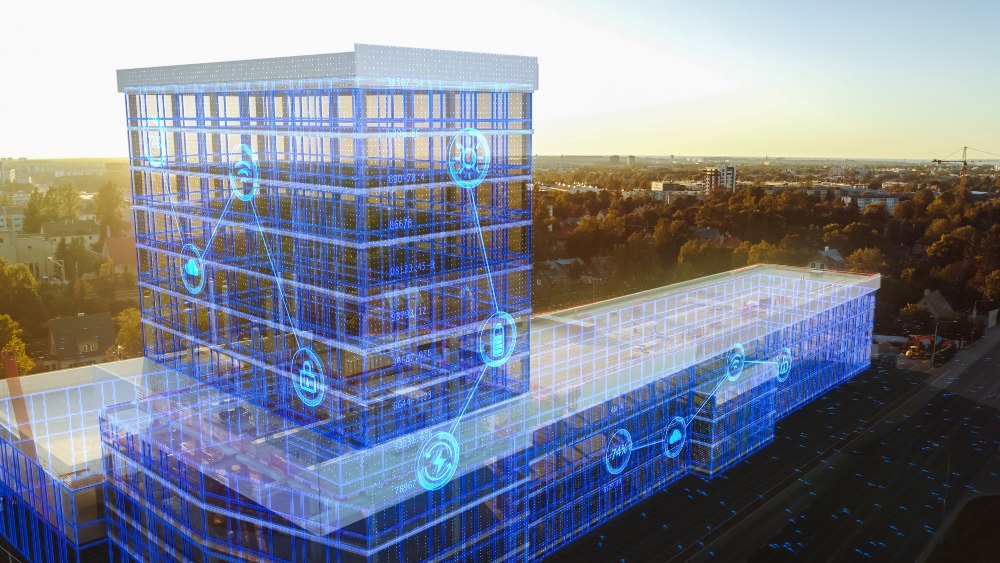The Rise of the Smart Buildings


James Thorpe
Share this content
Philip Ingram MBE describes how intelligent buildings are changing the game in security.
As technology continues to advance, the way we secure buildings is also changing.
From traditional locks and alarms to advanced security systems, the industry has come a long way.
One of the most exciting developments in building security is the rise of intelligent buildings – but what are intelligent buildings and how is AI being used?
Smart buildings, sometimes referred to as smart buildings, are structures that use advanced technology to automate building operations and improve energy efficiency.
These buildings can be used for a variety of purposes, including commercial, residential and industrial.
In addition to energy-saving capabilities, smart buildings are becoming increasingly popular for their ability to enhance security at offices and corporate spaces.
Technology has enabled security systems to become more advanced, but it is the integration of systems and the application of AI that turns advanced systems into intelligent systems; integration with other intelligent systems then helps to create a smart building.
“The term intelligent buildings refers to today’s sophisticated living environments that must support communication, energy, fire and security protection systems,” states the US Department of Energy Office of Scientific and Technical Information.
Several challenges and opportunities must be addressed to ensure the ongoing safety and security of intelligent building environments.
With the increasing interconnectivity of systems, it is essential to develop a holistic approach to security that addresses both physical and cyber-threats.
Security & Efficiency of Smart Buildings
A smart building security becomes more complex, it is crucial to establish and maintain compliance with various regulatory frameworks.
This includes, amongst other regulations, the IoT Security Compliance Framework, which provides a foundation for addressing security objectives around confidentiality, integrity and availability.
The rapid development of new technologies, such as drones and AI, offers endless possibilities for enhancing intelligent building security.
These innovations present both challenges and opportunities for stakeholders, as they must stay up to date with the latest advancements and determine how best to integrate them into their security strategies.
One way to ensure this is through collaboration and partnerships.
Collaboration and partnerships are essential to addressing the many challenges facing intelligent building security.
By working together, stakeholders can share knowledge, resources and expertise to develop innovative solutions that ensure the ongoing safety and security of these environments.
Intelligent buildings offer a number of benefits for security.
Perhaps the biggest advantage is the ability to automate security systems, making them more efficient and effective.
For example, access control systems can be programmed to grant access to authorised individuals automatically, reducing the need for manual intervention.
In addition, smart buildings can be equipped with surveillance systems that use advanced analytics to identify potential threats – these systems can automatically alert personnel when suspicious activity is detected.
Another benefit is that they can be remotely managed, meaning that personnel can monitor the building from a central location, making it easier to respond to security threats quickly and efficiently.
“An intelligent building requires real time information about its occupants so that it can continually adapt and respond,” as quoted by Keeling et al.
AI is playing an increasingly important role in building security.
AI-powered security systems use machine learning algorithms to analyse data in real time, identifying potential threats and alerting security personnel.
These systems can also be used to automate security responses, such as locking doors or activating alarms.
“The introduction of AI into the world of smart building management is revolutionising the way buildings are managed. AI is providing a more efficient, cost effective and secure way to manage buildings, allowing for better energy efficiency, improved safety and increased productivity,” says Marcin Frąckiewicz in Artificial intelligence, TS2 Space.
Considerations & Trends
While intelligent buildings offer many benefits for security, there are also a number of challenges and considerations that must be taken into account when implementing these systems.
One of the biggest challenges is the need for integration with existing systems.
Intelligent buildings may incorporate a range of technologies and it can be difficult to ensure that these systems work together effectively.
While it may seem obvious that smart buildings offer heightened security, this concept now extends beyond physical security measures.
With the convergence of operational technology (OT) and information technology (IT), smart buildings must also focus on cybersecurity, as hackers increasingly target systems.
Intelligent buildings are well equipped to manage this convergence of technologies and address potential threats.
Another challenge is the need for advanced analytics tools.
Intelligent buildings generate large amounts of data and it can be difficult to analyse this data effectively without the right tools. In addition, there is a need for skilled personnel who can maintain such systems.
Looking to the future, there are several exciting developments in intelligent building security technology.
One trend is the increasing use of AI-powered systems, which are becoming more sophisticated and effective at identifying potential threats.
Another trend is the rise of edge computing, which allows for data to be analysed in real time at the edge of the network, reducing latency and improving performance.
In addition, there is a growing focus on sustainability in smart buildings.
These buildings are designed to be more energy-efficient, reducing their impact on the environment and lowering operating costs.
As a result, we can expect to see more intelligent buildings incorporating renewable energy sources and other sustainable features in the years ahead.
Conclusion
A final comment should go to Paul Ehrlich, who was quoted in Architectural Science Review, saying: “Intelligent buildings are not just about technology, they are about people.” We often forget that when we discuss technology.



